
SS Boards
Material : Stainless Steel
Shape : Rectangular
Size : 373*23*198 (mm)
Thickness : 2.0MM
...more
Fire Sprinkler Systems
We are main supplier of this product.

Fire Hydrent Systems
We are main supplier of this product.

Fire Fighting Equipments
We are working with a group of professionals who make special emphasis on the products packaging and ensure that the material is procured from the reliable sources only. We have automated systems to manage the sorting and packaging of all the products that are kept in the spacious warehouse. To look after this, we have hired veteran professionals.
...more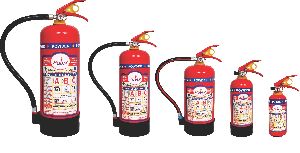
Fire Extinguishers
To make sure supreme quality retaining, we bundle our goods in high-grade packaging supplies that can endure mechanical damages and logistical jostling. Moreover, they are branded to provide product details. For us ensuring distribution of order on time is not a big thing is easy, as we have a dynamic logistic system that empowers us to reach patrons within the promised time.
...more
Conventional Fire Alarm System
We are situated in Delhi(India) and we have a well-developed network that assists us in reaching any destination. We have segregated our infrastructural facility into different units and one of them in warehouse wherein we keep a huge lot in safe and secured manner.
...more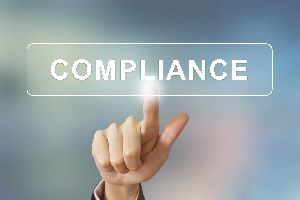
Compliance Boards
Shape : Rectangular
Lighting Type : LED
Material : Acrylic
Size : 373*23*198 (mm)
Thickness : 2.0MM
Application : Advertising
...more
Fire Services Item

Fire Extinguisher

Emergency Beam Light

Emergency Exit Light

Fire Alarms Systems

Glow Signe Board

3D Signage Board

Road Safety Equipments

Fire Safety Training
We provide training on fire safety with the aim of reducing losses. We have a team of well trained personnel who have a professional knowledge of how to fight with fire in case of any fire accident. We conduct various programs like Fire prevention and control Detection system Investigation of fire On site training for hand on experience on the installed fire fighting equipments Disaster Management Evacuation procedure Fire safety refers to precautions that are taken to prevent or reduce the likelihood of a fire that may result in death, injury, or property damage, alert those in a structure to the presence of an uncontrolled fire in the event one occurs, better enable those threatened by a fire to survive, or to reduce the damage caused by a fire.Fire Safety Audit : Fire safety refers to precautions that are taken to prevent or reduce the likelihood of a fire that may result in death, injury, or property damage, alert those in a structure to the presence of an uncontrolled fire in the event one occurs, better enable those threatened by a fire to survive, or to reduce the damage caused by a fire. Fire safety measures include those that are planned during the construction of a building or implemented in structures that are already standing, and those that are taught to occupants of the building.Threats to fire safety are referred to as fire hazards. A fire hazard may include a situation that increases the likelihood a fire may start or may impede escape in the event a fire occurs. Fire safety is often a component of building safety. We inspect buildings for violations of the Fire Code and along with that go into schools to educate children on Fire Safety topics. We are indulge in training newcomers for Fire Prevention Division and also conduct inspections or make presentations.Following Key Elements checked during Fire Safety Audits Building has a facility in accordance with the version of the local building code Maintaining a facility and conducting yourself in accordance with the provisions of the fire code. This is based on the occupants and operators of the building being aware of the applicable regulations and advice. Examples of these include: Not exceeding the maximum occupancy within any part of the building. Maintaining proper fire exits and proper exit signage (e.g., exit signs pointing to them that can function in a power failure) Compliance with electrical codes to prevent overheating and ignition from electrical faults or problems such as poor wire insulation or overloading wiring, conductors, or other fixtures with more electric current than they are rated for. Placing and maintaining the correct type of fire extinguishers in easily accessible places. Properly storing and using, hazardous materials that may be needed inside the building for storage or operational requirements (such as solvents in spray booths). Prohibiting flammable materials in certain areas of the facility. First Aid Training : Like in the case of fire, first aid is another important aspect in the fields of safety and security. Precious lives are saved if correct first aid is administered in the time of need. Again the measures like training and knowledge of first aid are equally important, both for the security personnel and client’s staff at the premises. The course includes practical training including live demonstrations. The syllabus includes the following aspects Emergency First Aid & CPR Bleeding Care for Shock First Aid for Sprains and Strains Care for dislocation and fractures Poisoning Burn Care Neck & Back Injuries Heat Exhaustion/Heat Stroke Hypothermia/Frost Bite Severe Allergic Reactions Bites and Stings Faints/Passing out Cardiopulmonary Resuscitation (CPR) Rescue Breathing Specialized Training : In addition to the above, and in order to make the security guards more effective under all kinds of operational conditions, training is imparted to cover the following subjects in greater detail: Fire prevention and control Bomb threat and meeting the situations arising there from Evacuation procedures and drills First Aid Investigations and report writing Writing of an Assignment instruction Training of armed guards Training for escort duties Training for PSO duties
...more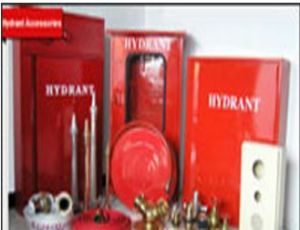
Fire Safety Equipment Installation and Maintenance
Fire incidents are one of the largest catastrophes that Needs to be prevented... No safeguards are good enough in case a detection mechanism and instant remedial measures are not ensured. Hence, fire would be treated at two different planes: Installation of efficient fire alarm system, such as conventional smoke detectors, heat detectors, fire detection sensors, wireless fire alarm panel, etc., to detect the incident of fire or any other miss-happening at early stages. Being one of the top addressable fire alarm system dealers we also provide advanced wireless fire alarm system such as Wireless smoke detector, addressable smoke detectors and more. Installation of efficient fire fighting equipments/fixtures in the premises to curb any sort of fire in building. Installation of sufficient number of fire extinguishers to extinguish any sort of Fire. For proper and efficient use of fire fighting equipments like fire cylinders, both the security staff and the client’s staff at the premises needs to be properly trained We provide services involving all the above mentioned remedial actions including installation & maintenance of all kinds of Fire Fighting equipments, Fire fighting systems, Fire Alarm Systems & Fire Safety training. Our purpose is to give services pertaining to fire exits, fire suppression systems, fire extinguishers, emergency action plan. Our expertise has enabled us to provide an impeccable spectrum of services related to installation & maintenance of all kinds of fire fighting equipments which includes the followings in which our company deals. We take pride in saying that we are a notable fire safety equipments supplier and fire extinguisher supplier also providing fire extinguisher refilling services as a part of maintenance.Hydrants & its Accessories :A well-designed wet riser/hydrant system is the backbone of fire protection systems for modern buildings and is mandated by the local Fire Brigade, insurance authorities and other regulatory bodies. A typical building normally has two or more shafts, which travel from the lowest level of the building to its terrace. Such shafts are normally used to carry the piping for the wet-riser systems. Hydrant outlets are provided on every floor so that the entire floor area of the building is adequately covered.Outlets are provided in the form of double-outlet landing valves. Apart from a canvas hose for the use of fire-fighting personnel in the event of fire, a rubber hose of 20 mm diameter is also provided, mounted on a hose-reel drum to enable volunteers from the general public to help fight incipient fires.All wet-riser pipes remain charged with water at systems pressure. The opening of a hydrant landing valve or hose reel on any floor reduces the pressure in the pipeline and starts the hydrant pump. Pump-sets of suitable capacity are provided for this purpose. Apart from the wet riser system, hydrant points should also be provided at strategic locations around the building at ground level. These ‘yard hydrants’ are of immense use on fire fighting.Water must be made available through reservoirs in adequate quantities at convenient locations. Periodic drills should be conducted by opening the hydrant valves to ensure proper operation of the systems.Hydrant Systems can be of two types :(a) External Hydrant System, where the hydrants are installed in the open, like the city or town water mains, or hydrant systems installed in the open areas in industrial or such other occupancies; and (b) Internal Hydrant System, installed in buildings or structures to be protectedWe design an integrated Hydrant System as per national and international norms. We consider capacity of fire pump, size and arrangement of pipes used for hydrant system, pressure at hydrant point against the available fire risk. Our designed Hydrant System is an arrangement of piping, valves, hose connection and allied equipment installed in building and structure with connection located in such a manner that water can be discharge in stream of spray patterns through attached hose and nozzle for the purpose not only extinguish the fire but at the same time save the occupants and contents of area in with better response time.Sprinkler System : A fire sprinkler system is an active fire protection measure, consisting of a water supply system, providing adequate pressure and flow rate to a water distribution piping system, onto which fire sprinklers are connected. Although historically only used in factories and large commercial buildings, home and small building systems are now available at a cost-effective price. These sprinklers are manufactured by leading fire fighting equipments manufacturers and thus product performance is assured.Diesel, Jockey & Fire Main Pump Set : Pump-sets of suitable capacity are provided for water supply to hydrants & sprinkler systems. Because of the static pressure differential caused by the change in floor height, a multi-stage pump is employed so that different tapping can be taken from the output of the pump. Each of these tapping can be used to serve more than one floor. Pumps-sets should be fed with reliable electric supply from a separate feeder and it is therefore also desirable to have a stand-by diesel pump.CO2 Flooding System : CO2 Fire Extinguishing System is a total Flooding system for the protection of machinery spaces, pump rooms and cargo holds. It can be designed as a central bank and with a local protection of smaller spaces such as Paint Locker, Purifier Room, Galley Exhaust Duct etc. Cargo Holds Smoke Detection System can also be included in the CO2 System. The number of CO2 cylinders is calculated according to the size of the largest protected area. In a central bank system, more than one space can be protected. This advance system is developed by authorized and renowned fire safety equipments manufacturers in the worldCO2 Fire Extinguishing System is built-up using standardized components CO2 Valves Cylinder and Assembly Pipe with Check Valves and Flexible Hoses Cabinet, Time Delay Unit and Release Tubing CO2 Distribution Piping and Nozzles Alarm and Shut Down The CO2 cylinders, distribution valves are located in a central location. The system is activated manually from the release cabinet located in the Fire Station or just outside the CO2 Room. When activated, the pilot gas opens the main valve of the space on fire and the CO2 cylinders after a time delay. At the same time, alarm is activated to warn personnel in the area. CO2 gas is discharged into the space within 2 minutesFM200 Flooding System : FM-200 Engineered Fire Suppression Systems are designed for total flooding in accordance with NFPA 2001, This system is Environmentally-friendly and preferred fire suppression system for vital facilities that can’t afford fire-related business interruption of process controls, automated industrial operations, robotics, etc. Active on fire, but inert on people; non-toxic when used per NFPA Standard 2001. Safe, no-residue protection for Class A, B and C fires. Designed for maximum protection with minimum hardware; less space, lower cost.Features Zero Ozone Depletion – No Phase out Schedule. Perfectly Safe for Occupied Areas. CCOE Approved Seamless Cylinder. Less hardware compared to other Inert gas. Low maintenance. Low-pressure system – Gas stored at 25 bar. Engineered, pre-engineered or modular systems. Clean leaving no residue. Safe for discharge into occupied spaces.
...more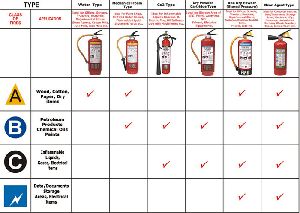
Fire Extinguisher Refilling
Fire incidents are one of the largest catastrophes, which need to be prevented. No safeguards are good enough in case the detection mechanism and instant remedial measures are not ensured. Hence, fire would be treated at two different planes: Installation of efficient Fire Alarm systems to detect the incident of fire or any other miss-happening at early stages. Installation of efficient fire fighting equipments/fixtures in the premises to curb any sort of fire in building. Installation of sufficient number of fire extinguishers to extinguish any sort of Fire. For proper and efficient use of fire fighting equipments like fire cylinders, both the security staff and the client’s staff at the premises needs to be properly trained We provide services involving all the above mentioned remedial actions including installation & maintenance of all kinds of Fire Fighting equipments, Fire Alarm Systems & Fire Safety training. Our purpose is to give services pertaining to fire exits, fire suppression systems, fire extinguishers, emergency action plan. A fire extinguisher, flame extinguisher, or simply an extinguisher, is an active fire protection device used to extinguish or control small fires, often in emergency situations. It is not intended for use on an out-of-control fire, such as one which has reached the ceiling, endangers the user (i.e., no escape route, smoke, explosion hazard, etc.), or otherwise requires the expertise of a fire department. Typically, a fire extinguisher consists of a hand-held cylindrical pressure vessel containing an agent which can be discharged to extinguish a fire.There are two main types of fire extinguishers: stored pressure and cartridge-operated. In stored pressure units, the expellant is stored in the same chamber as the firefighting agent itself. Depending on the agent used, different propellants are used. With dry chemical extinguishers, nitrogen is typically used; water and foam extinguishers typically use air. Stored pressure fire extinguishers are the most common type. Cartridge-operated extinguishers contain the expellant gas in a separate cartridge that is punctured prior to discharge, exposing the propellant to the extinguishing agent. This type is not as common, used primarily in areas such as industrial facilities, where they receive higher-than-average use. They have the advantage of simple and prompt recharge, allowing an operator to discharge the extinguisher, recharge it, and return to the fire in a reasonable amount of time. Unlike stored pressure types, these extinguishers use compressed carbon dioxide instead of nitrogen, although nitrogen cartridges are used on low temperature (-60 rated) models. Cartridge operated extinguishers are available in dry chemical and dry powder types in the U.S. and in water, wetting agent, foam, dry chemical (classes ABC and B.C.), and dry powder (class D) types in the rest of the world.We recognize five fire classes: Class A fires involve organic solids such as paper and wood. Class B fires involve flammable or combustible liquids, including petrol, grease, and oil. Class C fires involve flammable gases. Class D fires involve combustible metals. Class F fires involve cooking fat and oil. Installation : Fire extinguishers are typically fitted in buildings at an easily-accessible location, such as against a wall in a high-traffic area. They are also often fitted to motor vehicles, watercraft, and aircraft – this is required by law in many jurisdictions, for identified classes of vehicles. Under NFPA all commercial vehicles must carry at least one fire extinguisher, with size/UL rating depending on type of vehicle and cargo (i.e. fuel tankers typically must have a 9 Ltr or Kg, while most others can carry a 2 or 1 kg. The revised NFPA created criteria on the placement of “Fast Flow Extinguishers” in locations such as those storing and transporting pressurized flammable liquids and pressurized flammable gas or areas with possibility of three dimensional class B hazards are required to have “fast flow” extinguishers as required by NFPA. Our Company provides the services for the supply & installation of the fire extinguishers as NFPA and National Building Code 2005.Maintenance : Fire extinguisher requires regular maintenance by a competent person to operate safely and effectively, as part of fire safety legislation. Lack of maintenance can lead to an extinguisher not discharging when required, or rupturing when pressurized. Deaths have occurred, even in recent times, from corroded extinguishers exploding.Three types of maintenance are required: Basic Service : All types of extinguisher require a basic inspection annually to check weight, correct pressure (using a special tool, not just looking at the gauge) and for signs of damage or corrosion, cartridge extinguishers are opened up for internal inspection & check weighing of the cartridge, labels are checked for legibility, where possible dip tubes, hoses and mechanisms checked for clear free operation. Extended Service : Water, Wet Chemical, Foam & Powder extinguishers require every five years a more detailed examination including a test discharge of the extinguisher and recharging; on stored pressure extinguishers this is the only opportunity to internally inspect for damage/corrosion. By recharging fresh agent is used as they all have a shelf life, even water goes foul inside an extinguisher; Note: extinguishers should be percentage tested according to total number of units in any given area. Some extinguishers contain pressure in excess of 1.38 MPa (200 psi) and this internal pressure over periods of time affects each brand & make differently depending on their placement & location. Overhaul : CO2 extinguishers, due to their high operating pressure, are subject to pressure vessel safety legislation and must be hydraulic pressure tested, inspected internally & externally and date stamped every 10 years. As it cannot be pressure tested a new valve is also fitted. If replacing any part of the extinguisher (valve, horn, etc.) with a part from another manufacturer then the extinguisher will lose its fire rating. This may invalidate insurance, as would incorrect or inadequate servicing if it were to be found. Refilling of Fire Extinguisher : Our Company is also engaged in refilling of Fire Extinguishers. After basic inspection, if any fire extinguisher observed to be in a condition in which it requires immediate refilling or recharging then our highly expertise team provide services in refilling of Fire extinguishers. We also have a facility to get the hydraulic testing along with the refilling of fire extinguishers.We use the following to refill the exhausted fire extinguishers : ABC Dry Powder (Monoammonium Phosphate) for ABC type Fire Extinguishers : AFFF ((aqueous film forming foam) for Mechanical Foam or AFFF type Fire Extinguishers : AFFF used on A and B fires and for vapor suppression. The most common type in portable foam extinguishers. It contains fluoro tensides[14] which can be accumulated in the human body. The long-term effects of this on the human body and environment are unclear at this time. Sodium Bicarbonate Powder for DCP type Fire Extinguishers : Sodium bicarbonate, “regular” or “ordinary” used on class B and C fires, was the first of the dry chemical agents developed. In the heat of a fire, it releases a cloud of carbon dioxide that smothers the fire. That is, the gas drives oxygen away from the fire, thus stopping the chemical reaction. This agent is not generally effective on class A fires because the agent is expended and the cloud of gas dissipates quickly, and if the fuel is still sufficiently hot, the fire starts up again. While liquid and gas fires don’t usually store much heat in their fuel source, solid fires do. Sodium bicarbonate was very common in commercial kitchens before the advent of wet chemical agents, but now is falling out of favor, as it is much less effective than wet chemical agents for class K fires, less effective than Purple-K for class B fires, and is ineffective on class A fires. White or blue in color. APW (Air Pressurized Water) for Water Co2 type fire Extinguisher APW (Air pressurized water) cools burning material by absorbing heat from burning material. Effective on Class A fires, it has the advantage of being inexpensive, harmless, and relatively easy to clean up. In the India, APW units contain 2.5 gallons (9 liters) of water in a tall, stainless steel cylinder. Co2 for Co2 type Fire Extinguisher CO2, a clean gaseous agent which displaces oxygen. Highest rating for (20 pound) portable CO2 extinguishers is 10 B:C. Not intended for Class A fires, as the high-pressure cloud of gas can scatter burning materials. CO2 is not suitable for use on fires containing their own oxygen source, metals or cooking media. Although it can be rather successful on a person on fire, its use should be avoided where possible as it can cause frostbite and is dangerous to use as it may displace the oxygen needed for breathing, causing suffocation.
...more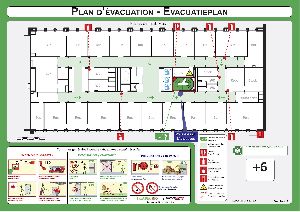
Fire Evacuation Plan
Fire Evacuation Plan is a written document which includes the action to be taken by all staff in the event of fire and the arrangements for calling the fire brigade. It can include any relevant information in relation to the Fire Evacuation Plan.
...more
Fire Services

Fire Exit Plan

Fire Safety Services
Be first to Rate
Rate This